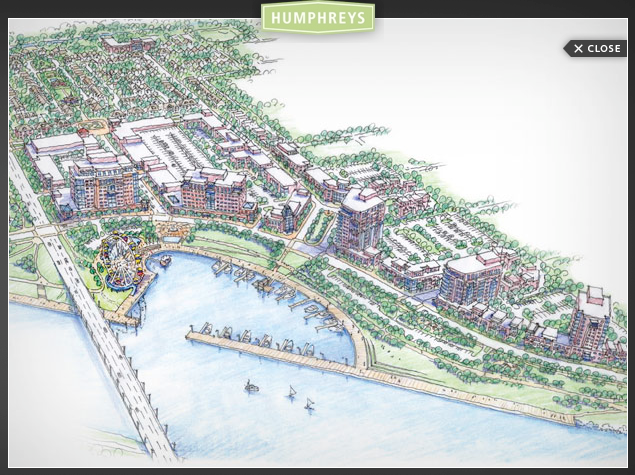Airpark development may include river reroute: Downtown OKC property stands to gain value if plan proceeds
by Brian Brus
The Journal Record
4/6/2006
OKLAHOMA CITY - Developers may seek to divert Oklahoma River water to the former Downtown Airpark to enhance its value, investment group partner and former Mayor Kirk Humphreys said.
"It could involve modifications to the river," Humphreys said. "Basically, you'd try to do whatever you can to get the maximum value and utilization out of it.
"But our plans are not firm," he said. "And the land will not come into play until the highway moves. … And that's when it'll really start to realize its value."
In February, Aduddell-Gibraltar Partners LLC placed the winning bid of $7.2 million for the 81-acre airpark property. Last year the airpark was closed and put into receivership after Downtown Airpark Inc. faced financial challenges, owing more than $7 million to creditors.
The new investment partnership is composed of Aduddell Cos. and Gibraltar Investments, headed by Grant Humphreys. His brother Blair and father, Kirk Humphreys, also are involved in the deal.
Kirk Humphreys said he expects environmental-impact studies on the area to be ready for review within a few weeks, with closing on the deal to follow shortly thereafter. Developers will weigh options for the land then, he said.
"Who knows what direction it could take?" Humphreys said. "We haven't even hired a planning firm yet."
Pat Downes, who had a small interest in the property when it was turned over for sale, said river diversion or the creation of an inlet from the river nearby was explored in the conceptual master plan originally published by the River Development Trust.
"It shows an architect's rendering of what that property might look like with water features brought onto the property itself," said Downes, who is also director of development for the Oklahoma City Riverfront Redevelopment Authority.
"They've acknowledged the existence of the concept," Downes said when asked if developers had approached him about possible river diversion. "But nobody has said, 'We're going to go do X, Y or Z.' I don't think they're there yet."
As an example of one possible outcome, Downes pointed to the inlet created near the Chesapeake Energy-sponsored boathouse near the Bricktown Canal. He said such construction off the river "is a fairly simple process."
"I know they're discussing some possibilities," Downes said. "I suspect they're thinking about those opportunities."
Oklahoma County assessor's office records show much of the airpark lies in Federal Emergency Management Agency's 100-year floodplain zone. Such FEMA-defined boundaries describe zones of the probability of water covering an area within a particular period - a 100-year floodplain means that historical records show a 1-percent probability of flooding each year.
Downes and Kirk Humphreys both said the park was not in the 100-year floodplain. Assessor's records, which are based on FEMA data, show otherwise. Humphreys said the construction of river dams in recent years would likely change those zones.
The Oklahoma City Zoological Park was founded at the site and was moved to NE 50th Street because of flooding problems in the early 1920s before the Army Corps of Engineers straightened the river. The airpark was built later.
City Manager Jim Couch said city officials would be open to a proposal to somehow divert river water to development.
"We'd work with them on that. We think that could be an amenity to the river, if they'd like to do that," Couch said. "I have talked with Kirk (Humphreys) about it, his development, but that particular option was not discussed."
Downes said, "Typically by adding shoreline, you add value. But you have to be careful how much money you spend creating that shoreline. … In general, waterfront property has a higher value than not waterfront."
Downes said residential or commercial development, "along the waterfront with views of the Oklahoma City skyline across the water, would be a very attractive development model."
Grant Humphreys said earlier that the property would likely be held without development for three to five years while Interstate 40 is realigned.





 Reply With Quote
Reply With Quote




Bookmarks